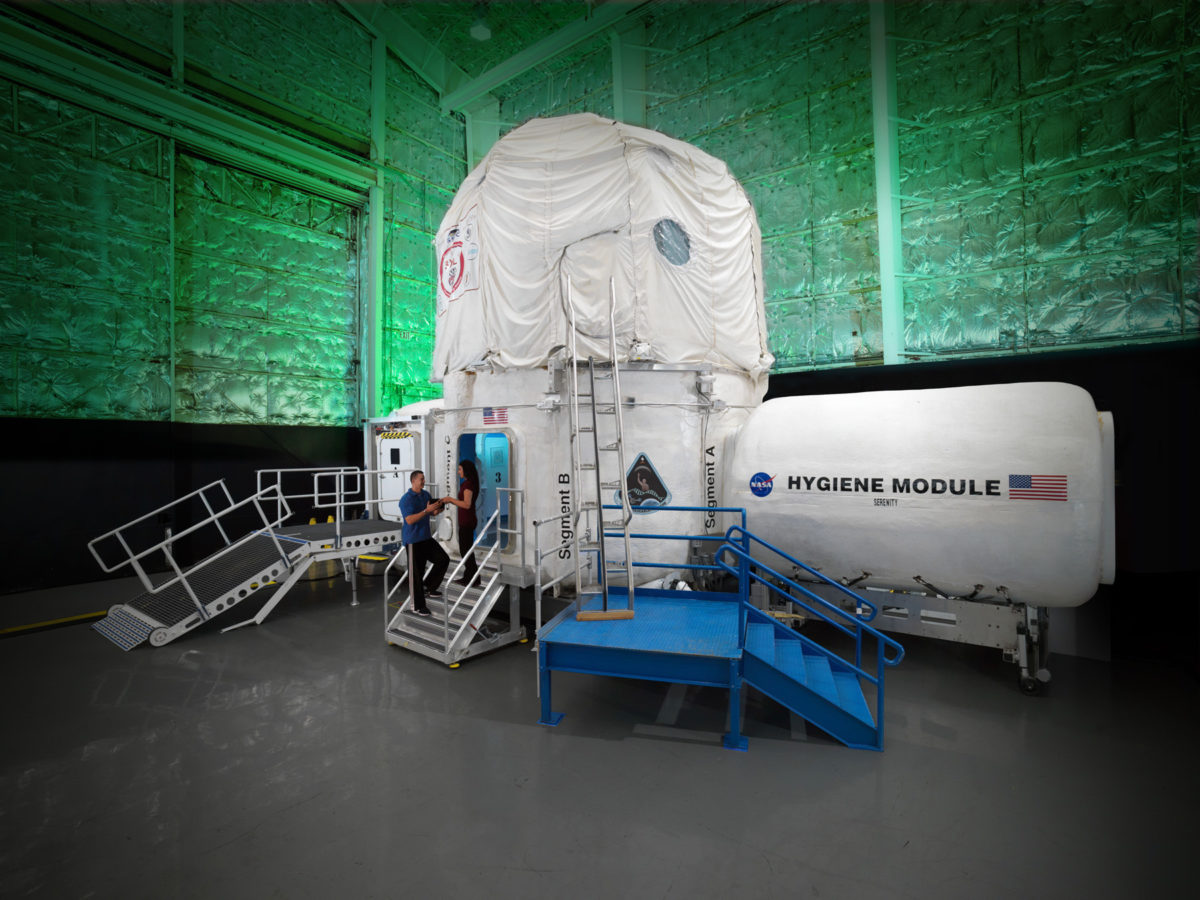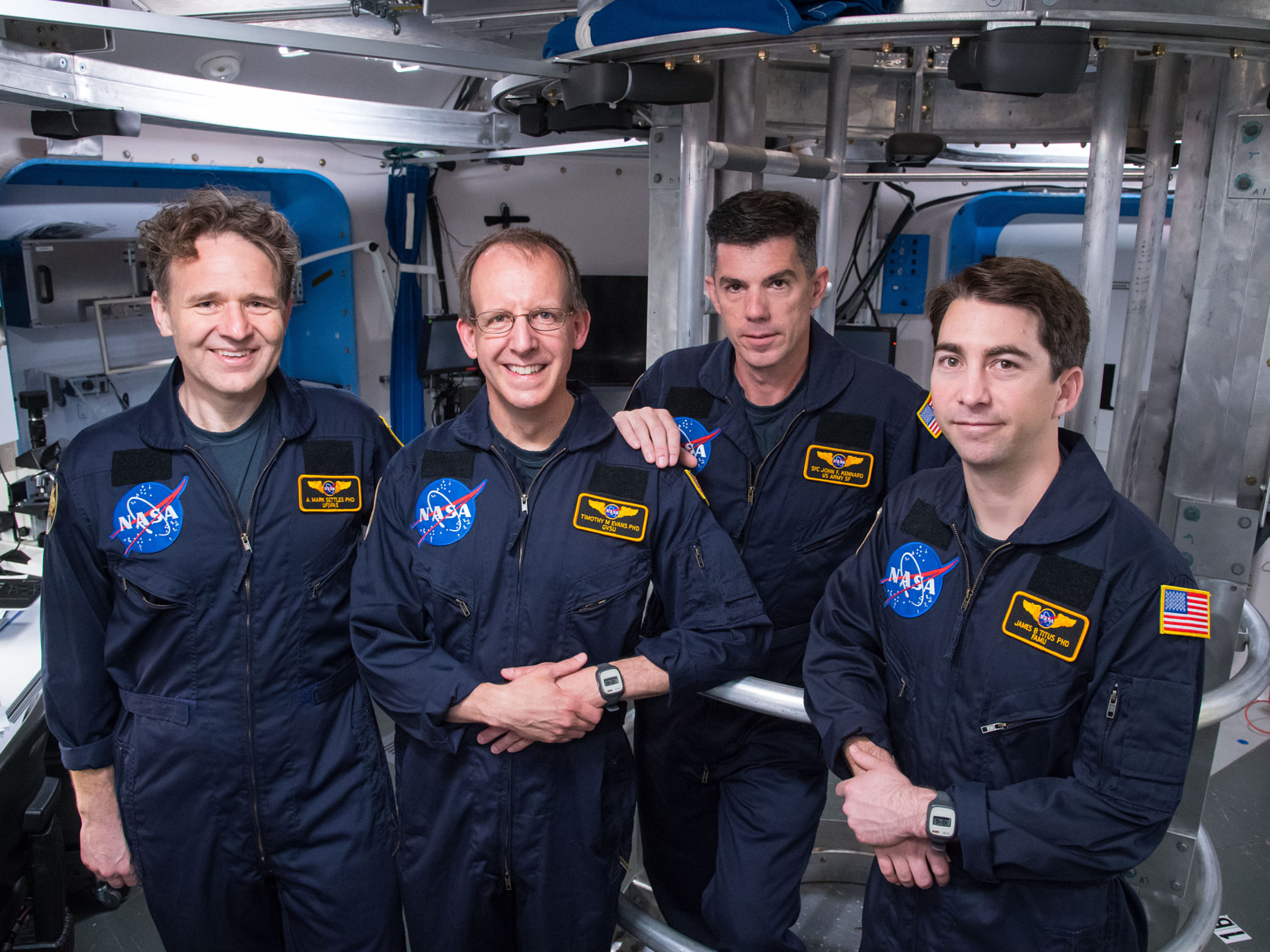Tim Evans • Jul 25, 2017
HERA team completes 45-day mission to explore asteroid, from Texas
Editor's note:
In May, Tim Evans shared his thoughts with The Planetary Society ahead of the HERA XIII mission, which simulated a 45-day mission to visit an asteroid. On June 19, the four-person crew completed their mission, and Evans wrote a follow-up story about the experience.
For more information about the program, visit the HERA website, where you can also apply for a future mission.
After 45 days of confinement, we emerged from the Human Exploration Research Analog (HERA) on the evening of June 19. The mission was interesting, fun and challenging, although I am glad to now be able to get more sleep (more on that shortly!). Our crew of four (James Titus, John Kennard, Mark Settles, and myself) managed to complete the mission, and hopefully we provided lots of useful data for the research teams that were studying us and our interactions.
One of the broad research goals for our mission was to observe the effects of chronic sleep restriction on our individual and team performance. As such, we were limited to 5 hours of sleep for most nights (lights out at 2:00 a.m. and on at 7:00 a.m.), along with limited caffeine consumption (we had coffee, but we were limited in how much of it we could drink and when we could drink it). I knew this would be challenging, and I was not disappointed! After a couple weeks of limited sleep, I felt tired nearly any time I was awake. It was actually interesting to observe how the limited sleep made things such as reading a book or maintaining focus for extended periods of time more difficult. In order to stay awake and a bit more alert, I found myself doing many of my tasks while standing or pacing in the limited space. Even just a little bit of movement was helpful in perking myself up throughout the day.

During a typical day, portions of our schedule were filled with various cognitive tests, simulations, and surveys, interspersed with free time (some days we had very little free time and others we had more). One of the simulations that the crew enjoyed the most was the extravehicular activity (EVA) practice. As our mission was a simulated visit to an asteroid, we spent a considerable amount of time training for the asteroid rendezvous. In these simulations, two crew members piloted a simulated spacecraft from the main habitat to the asteroid. They would then release the other two crew members from the spacecraft, and those two people would maneuver down to the surface of the asteroid in their simulated space suits to conduct various studies. The people conducting the EVA wore virtual reality headsets that gave the illusion of being in a space suit and floating through space or moving around on the surface of the asteroid. We enjoyed these particular simulations not only because they felt somewhat realistic, but also because they were challenging and they required us to work closely together as a team in order to complete the various objectives.
The food during the mission was generally delicious. Most of it was either freeze dried or thermally sealed in foil pouches. For the freeze dried foods, the galley was equipped with an injection system that allowed us to add a measured amount of hot or cold water, depending on the particular food item. The foods that were sealed in foil pouches were heated in a small oven and eaten directly out of the bag. We were all impressed with the variety of foods that were available. A couple of our favorite foods were Turkish fish stew (not one I would have thought I would like, but it was very good!) and bread pudding. We were a little bit less excited about the freeze-dried eggs, but they did the job of filling us up.

As the end of the mission approached, I was both excited to get out and a little disappointed that it was coming to an end. I was particularly looking forward to having the freedom to move around, setting my own daily schedule, and eating whatever I wanted (I was especially craving pizza). I was satisfied with having completed the mission, though, and happy that we were able to provide data that will help NASA develop their plans to send people to deep space (i.e., Mars) and return them home safely. If you are looking for not just a challenge, but also an opportunity to participate in the long-term exploration of space in a meaningful way, I would strongly recommend you consider applying to participate in the HERA program!
The Time is Now.
As a Planetary Defender, you’re part of our mission to decrease the risk of Earth being hit by an asteroid or comet.
Donate Today

 Explore Worlds
Explore Worlds Find Life
Find Life Defend Earth
Defend Earth

